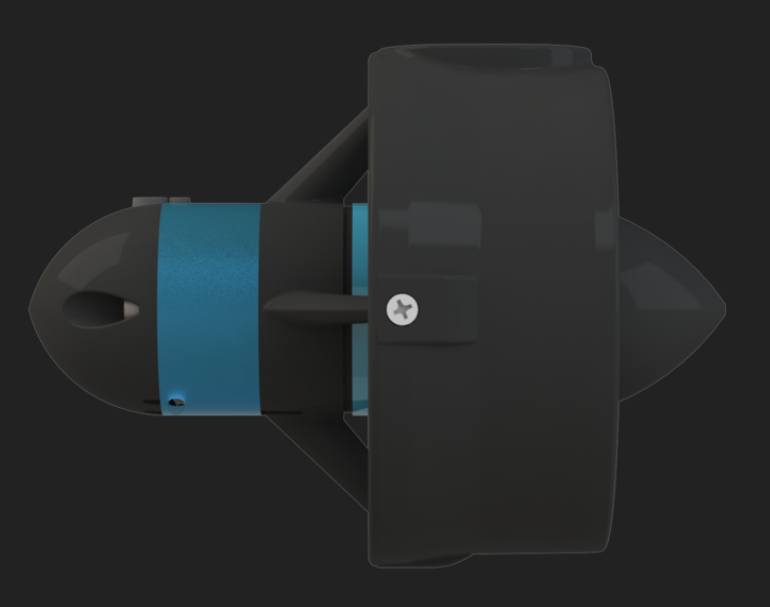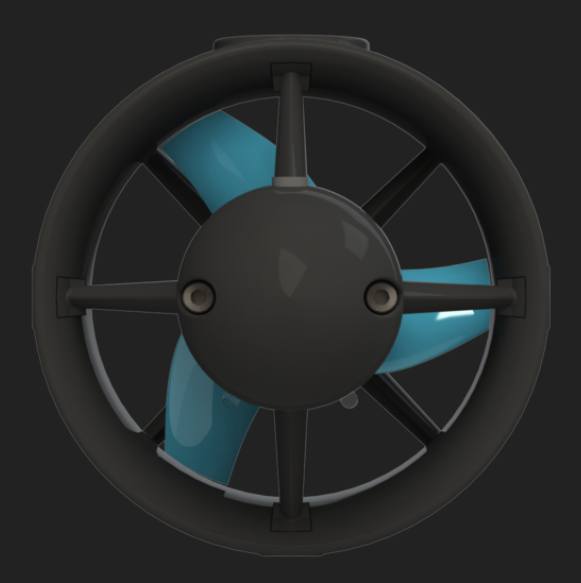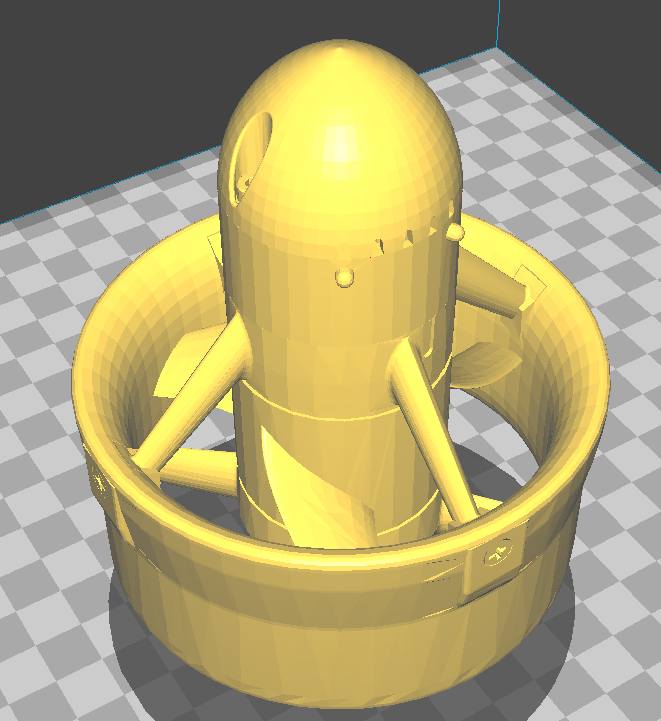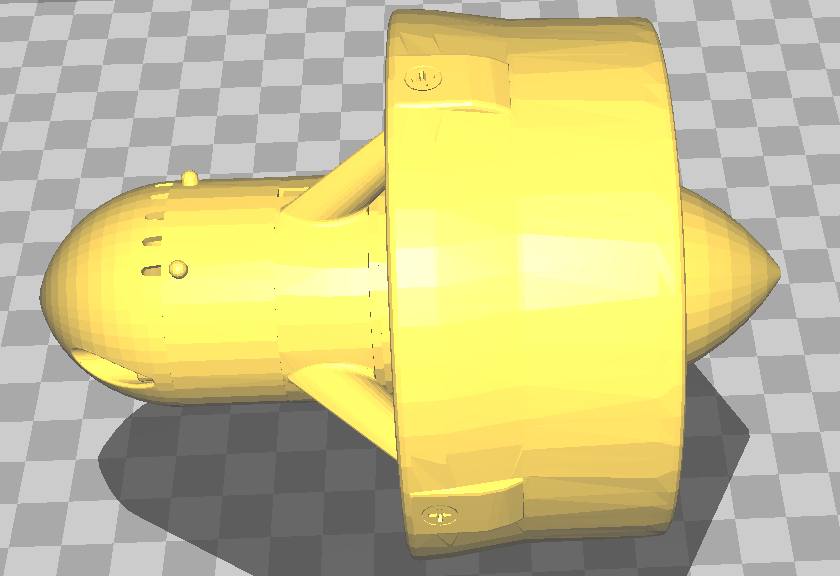in an ideal world a servo controlled variable pitch propeller would be perfect, gentle pitch for start up, and then aggressive pitch for when up on the plane,
so its finding the sweet spot of compromise
I have a concern that some might automatically think that having a duct will make it safe. Nothing against any of the other comments but I have as many concerns about a duct setup as without.
- The duct it self can have many sharp edges if not designed right. Rounded trailing edges are very inefficient so we tend to make them thin
- A large duct is inefficient so we tend to make it as small as possible. This can create a scissor effect between the duct and the prop.
I personally plan on running with no duct but will take other precautions to make the propeller as safe as possible. - The leading and tip edges will be rounded.
- I want to use an out runner motor to keep the assembly as short and close to the mast as possible.
- I will have a disconnect with a lanyard. I have already accidentally bumped the throttle when falling.
Regardless, there should be great caution from the rider about where their feet are. The mast and especially the trailing edge of the wings can injure a foot. Having flown model aircraft all my life I have see how little or much damage a spinning propeller can do to fingers and they are spinning at 30,000 rpm.
Mike
Thank you sir, You are an awesome resource! I enjoy watching your progression!!
yea i hear you, safety all the way, i am thinking of trying a 5 to 8 hp outboard engine propeller, or maybe the aliexpress thruster propeller assembly with the duct, trying to work out the best option,
so far i have the sss 360 kv motor a 240amp esc, and the neugart ple 60 5:1 (the ple 60 has a higher Nm range)
so do you think the open propeller is the best option?
its just rapid cutting off the power if (when) you fall off might make it safer
I don’t know what the answer but Dan and I plan on doing some safety testing this winter with different prop and duct configurations. I just want more open thinking and discussion on the subject.
Mike
Anyone try this software?
https://www.mecaflux.com/suite/en/heliciel.php
Looks better than the javaprop hah
Javaprop is getton looking but it works well. Tested three pops today in thrust tank, and specs were almost exact to what javaprop said they would be. Really amazing and is a game Changer.
When using javaprop be sure to change the LAST TAB - OPTIONS. For water… or else all your props are being tested in air density.
I think the wings in Javaprop become amazingly small. Is this realistic, that such a thin blade can withstand the thrust? I already double and tripled the chord length, but by this the efficiency goes down.
I would have to make these blades out of steel, at least carbon.
It is calculated with Dia:17cm, 5000RPM, 7.5m/s, MH116.
Analysed: eta 72%
did you set the options tab for water prop settings?
SEE SETTINGS: http://www.diy-electric-hydrofoil.com/java-prop/#!/up
Is this really correct? I am missing one 0 in the kinematic viscosity compared to
It does not have much influence at the chosen RPM and velocity. So RPM is definitely too high.
I will try to get a motor with less kv, optimized for our needs. Maybe Alien 6384 with 65kv? What do you think?
We tested three props this week two of them 80mm with different pitch, and a 110mm with very low pitch. Our best performance was a 80mm duct prop at 8750 RPM generating 20KG static thrust which is great given we were using the SSS motor 500kv which has very little torque.
The 110mm provided the same 20kg thrust, but its a big prop meaning larger duct to slow you down from high-speed cruising, it sits high above the fuselage meaning its easier to have the big blades come out of the water, and larger prop assembly costs 3x more.
Once our new motor arrives we should have 30-35kg thrust which is enough to get up riding with the 80mm. This is a super simple direct drive setup, small diameter profile and safer with a small prop. We will keep you posted!
How many amps with each setup?
We were testing this 80mm prop as well. works fine and we have 25kg thrust which is enough to ride our SUP-Foil. But we have a special wing with very sofisticated profile. Don´t know if it would be enough with a regular foil wing… Our Amps at takeoff & 50V are about 65A. Little less than with our impeller. we made them interchangeable so with 4 screws & about 5min. work you can decide to ride safe&fast impeller or more efficient ducted prop…
what the matter with this link chris?
it just goes to your landingpage
corrected link, thank you
Yes we did the same… we have 60mm impeller, 80mm duct, and 110 duct, all can be swapped in less than 5mins with a few bolts as well for easy testing and comparison…
There is also the bluerobotics way… But only 5 kgs of thrust
I wish they would upgrade their system to what we need
https://grabcad.com/library/bluerobotics-t200-thruster-with-blueesc-1
hello,
i made some test this week on 3 proppler:
1 aluminium from amazon
2 3D printed based on HIORT design
i measured : voltage before ESC / intenisty / speed of motor / torque on motor / Thrust.
this is my test lab :

this is blades:

my motor is out runner and start over heating
this is table of results :
my motor is really too small, i will go on 56104 SSS
in term of proppler, for same mechanical power we obtaine 25% less efficiency on 3D printed proppler
i will try to optimize my design on standard aluminium proppler
Excellent info. I will love to see your results on SSS 56104 !
Nice work Gobbla, and thank you for sharing the data. I hope to do some similar testing. Nice test rig you’ve designed and built too!
Could you add another column to your spreadsheet? If you have a column for thrust/watts it would give a good comparative number for combined motor/prop effectiveness.




